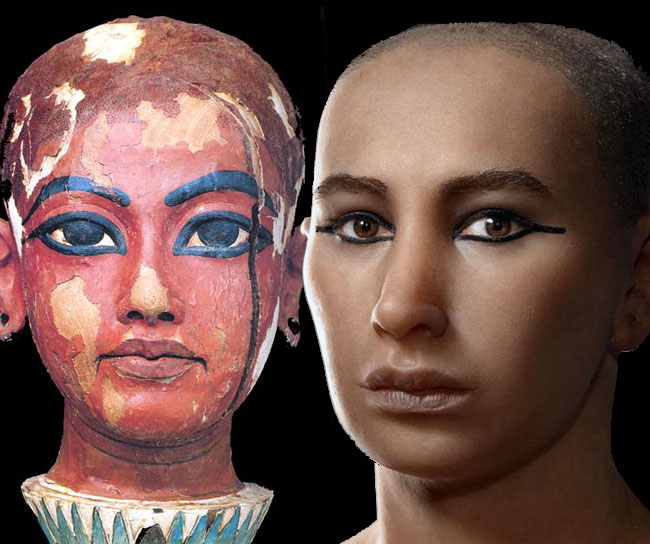Curse of King Tut's Tomb Turns 90

Happy birthday, curse of Tutankhamun. The rumor that some mysterious force set out to kill the team who opened the tomb of the boy pharaoh turns 90 today (April 5).
On April 5, 1923, Egyptologist Lord Carnarvon, the 57-year-old financial backer of the Tutankhamun search who opened the tomb along with Egyptologist Howard Carter, died of an infected mosquito bite he'd slashed open while shaving. Carnarvon's failing health spurred a media frenzy that gave birth to the myth of the "Mummy's curse."
"Finally, the world's press had a story they could publish without deferring to The Times," the newspaper that had an exclusive deal to report on the Tutankhamun tomb opening, Joyce Tylsdesley, an Egyptologist at the University of Manchester, said in a statement.
"As with all celebrity deaths, the story rapidly gathered its own momentum and soon there were reports of sinister goings on," Tylsdesley said. "At the very moment of Carnarvon’s death all the lights in Cairo had been mysteriously extinguished and at his English home Carnarvon’s dog, Susie, let out a great howl and died."
The history of King Hut
Tutankhamun ruled Egypt as a teenage pharaoh around 1332 B.C. His tomb, filled with gold and treasure, was a huge discovery in 1922, rocketing King Tut into fame as possibly the most recognizable symbol of ancient Egypt. Even in modern times, scientists continue testing Tut's DNA for evidence of his parentage.
But the tale of Tutankhamun's curse is full of embellishment and fantasy. For example, power cuts in Cairo were a dime a dozen at the time, so the coincidence of one at the time of Carnarvon's death was not very unlikely, Tylsdesley writes in her book "Tutankhamun’s Curse: The Developing History of an Egyptian King" (Profile Books, 2012). [Image Gallery: Amazing Egyptian Discoveries]
Sign up for the Live Science daily newsletter now
Get the world’s most fascinating discoveries delivered straight to your inbox.
What's more, poor canine Susie died four hours after her master, not in the same instant.
The curse got a big boost from novelist Marie Corelli, who wrote before Carnarvon's death, "I cannot but think that some risks are run by breaking into the last rest of a King of Egypt whose tomb is specially and solemnly guarded, and robbing him of possessions. This is why I ask, "Was it a mosquito bite that has so seriously infected Lord Carnarvon?"
After Carnarvon died, Corelli spread the false rumor that the phrase "death comes on wings to he who enters the tomb of a pharaoh" was carved on King Tut's tomb.
Mysterious deaths?
Carnarvon was the only member of the original Tutankhamun expedition who died early, but the deaths of people tangentially associated with the tomb kept the story of the curse alive. In 1923, Egyptian prince Ali Kemal Fahmy Bey, who had once visited the tomb, was shot and killed by his wife. Another tomb visitor, Georges Bénédite of the Louvre, died in 1926 at age 69. And Albert Lythgoe, the head Egyptologist at the Metropolitan Museum of Art in New York, died in 1934 at age 66. He got linked to the curse because he'd viewed Tutankhamun's open sarcophagus 10 years earlier.
"It’s not really surprising that this aspect of the story has lasted," Tyldesley said. "Given the choice between focusing on the pretty average life of King Tut, a tomb they weren’t allowed to see and a relatively uneventful death, journalists can’t be blamed for wanting to write about a mysterious ancient curse; no matter how unlikely its existence really is."
Follow Stephanie Pappas on Twitter and Google+. Follow us @livescience, Facebook & Google+. Original article on LiveScience.com.

Stephanie Pappas is a contributing writer for Live Science, covering topics ranging from geoscience to archaeology to the human brain and behavior. She was previously a senior writer for Live Science but is now a freelancer based in Denver, Colorado, and regularly contributes to Scientific American and The Monitor, the monthly magazine of the American Psychological Association. Stephanie received a bachelor's degree in psychology from the University of South Carolina and a graduate certificate in science communication from the University of California, Santa Cruz.









